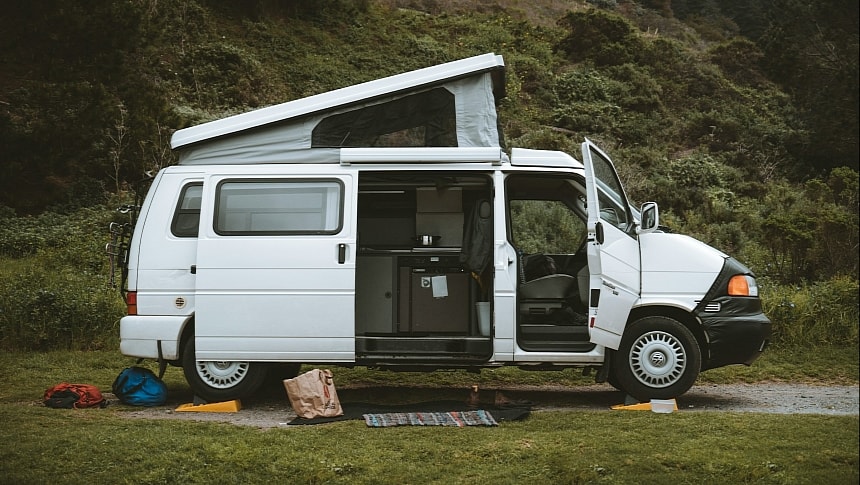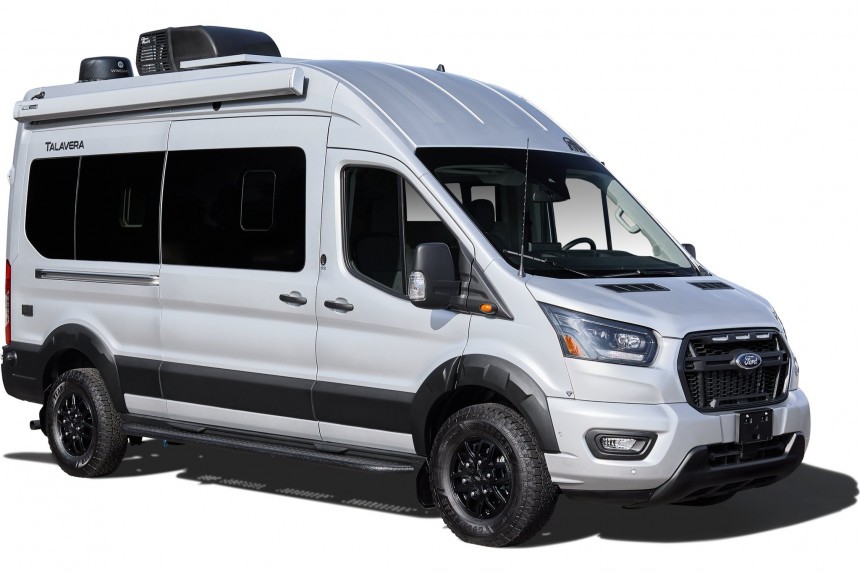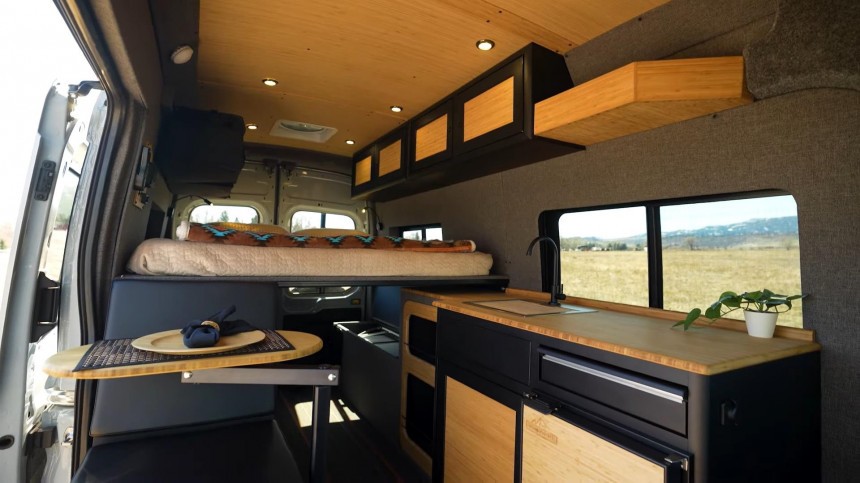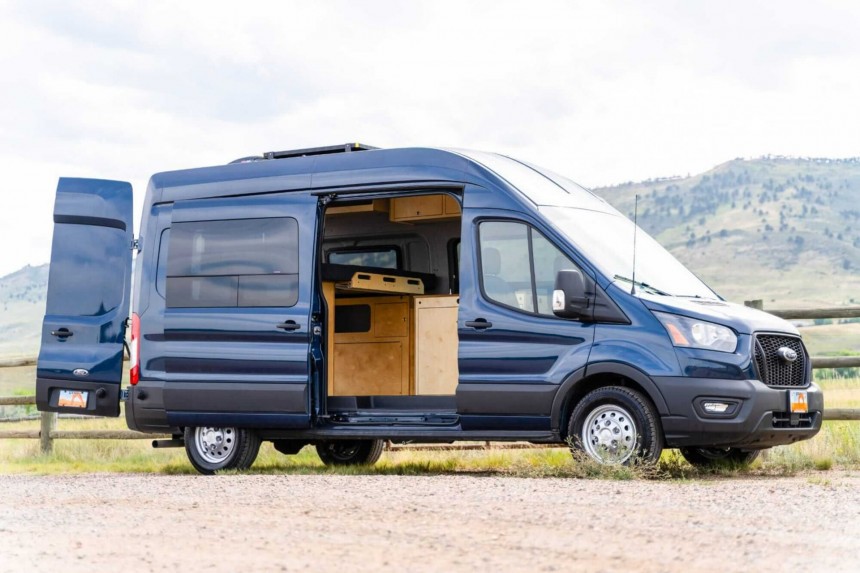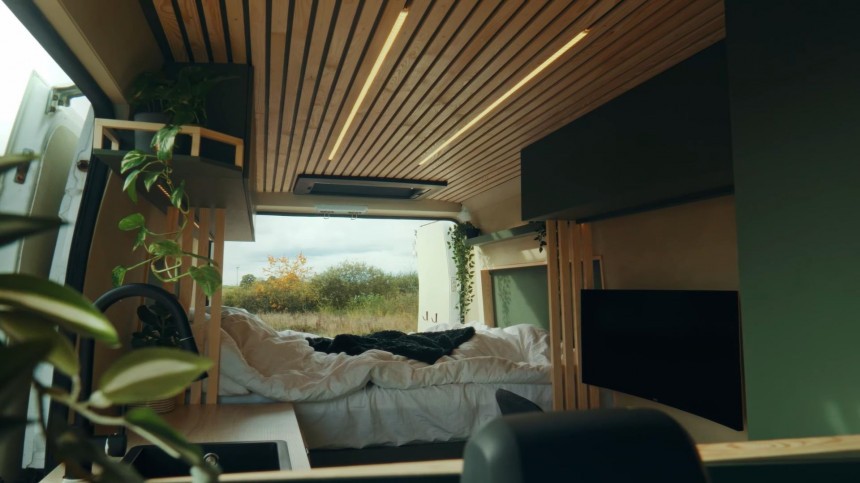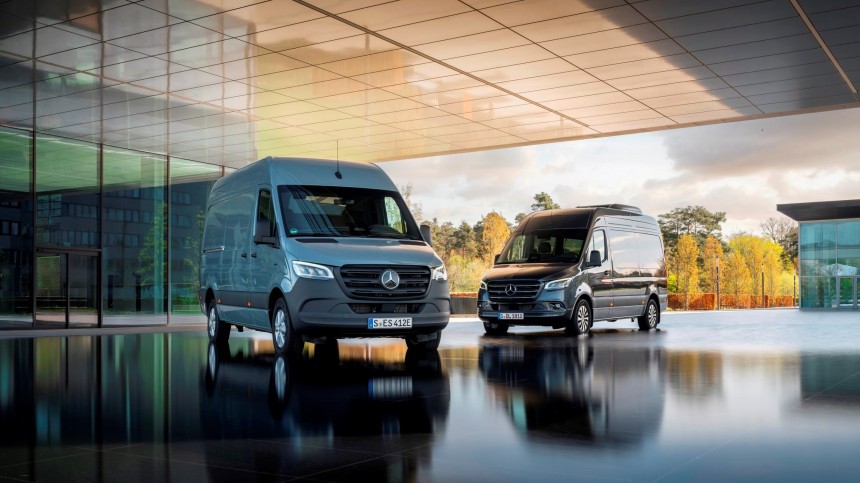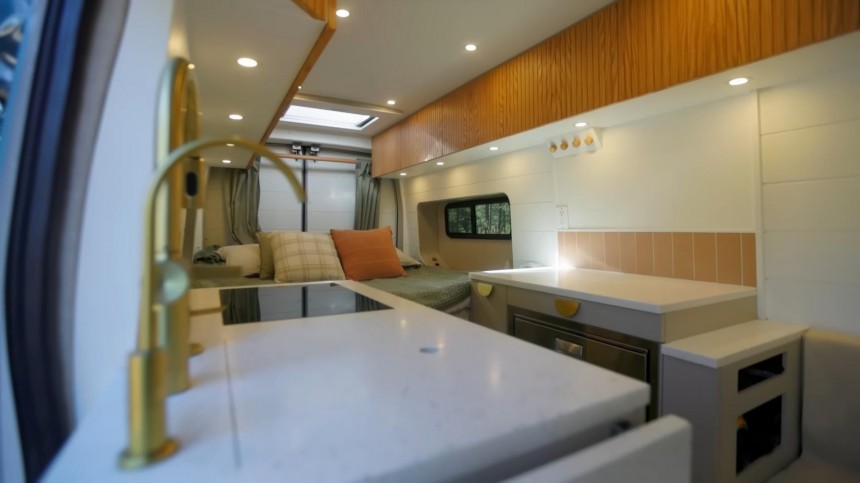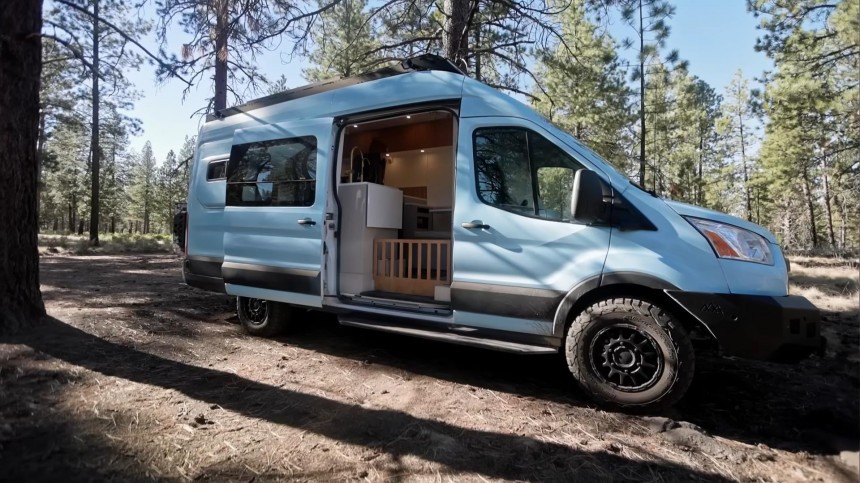In a world where the pace of life is getting faster with each passing day, more and more people are looking to slow things down by living in tiny homes on wheels. However, cost is the most significant factor deterring people from taking this leap. Today, I'm delving into the financial considerations of van life to prove that it can be done on (almost) any budget.
When I show my friends some of the camper vans I've written about, the first question that pops up is, "How much did it cost to build?" It's clear that cost is the factor that makes or breaks the shift to van life. So, how much do you have to invest in a conversion? The most honest answer I can give you is, "It depends."
Think of it as building a house – you're actually building a house, just one on wheels. You can go big and make it as expensive and luxurious as possible, but a minimal, no-frills project can also do the job. Ultimately, it depends on your needs, wants, and, more importantly, budget.
Option A: Buying it
I'll start with the option of buying a camper van, specifically a Class B RV. Think of the Winnebago Revel or the Thor Talavera. These mobile homes come with all the bells and whistles, but they will make a dent in your bank account. A new camper ban with all the amenities will set you back anywhere from $80,000 to more than $250,000.
One advantage of these types of builds is that they come with all the creature comforts of a conventional home. You typically get high-end interiors with deluxe finishes, a bathroom, and well-equipped kitchens. Moreover, they're easy to insure with RV or motorhome insurance.
On the other hand, they cost a pretty penny to buy. Furthermore, if you want your mobile home to satisfy a specific need or want, it might not be able to do that, as you can't really customize it. The available layouts are based on the van models, so you won't be able to change them radically.
To be frank, you can't really go wrong with buying such a vehicle as long as you're fine with spending the extra cash.
Option B: Paying someone to build it
Like Class B RV manufacturers, specialized conversion companies usually have pre-built layouts from which you can choose. Regarding cost, a professional van build is priced at around $25,000 to $55,000. The lowest price for a bare-bone conversion is around $10,000 - $12,000. However, the more custom features and fancy equipment you opt for, the more the price will increase – it can go well over $100,000.
This option is best for those of you looking to bring a specific camper van vision to life. Moreover, it's suitable for those who don't have the time, energy, or skills to build their own tiny home on wheels.
Most builders allow you to bring your own van to convert. However, these companies typically have deals with van manufacturers, so you might get a better price if you purchase directly from them instead of from the manufacturer. Of course, that is if you want to convert a new camper van. A more affordable option would be to buy a used van and have it converted by professionals.
A benefit of paying a company to do the work for you is that they know what they're doing. They have experience and know how to navigate their way around the problems that pop up when building a camper van. This is especially important if you want a custom feature you can find on little or no other camper vans on the market.
There's also the issue of warranties and troubleshooting. Things always break, so there's no getting around that. But instead of dealing with the problems yourself, you can rely on your van's builders to solve them, at least while your rig is still under warranty. Furthermore, if you want to make any upgrades, the builders will find a way to fit them since they assembled everything in the first place.
When it comes to drawbacks, the main issue is price. A major part of the sum you'll pay to have your camper van built will go to labor – i estimate roughly 50% of the total price.
Another con is the timeline. Some van builders work very quickly but also have long waiting lists. If you're looking to bring your dream rig to life as soon as possible, keep this in mind.
Customizability will depend on each builder. Some let you go wild and create whatever you need (for the right price), while others will limit you to several layout options and minimal customization.
Option C: camper van kits
This option is the least popular, but it can help you save a lot of money. A camper van kit saves you the hassle of choosing an interior and making it fit inside your mobile home. You can simply choose a camper van kit based on your preferred van model, assemble it, and fit it. In some cases, like the Vantopia kit I recently wrote about, you don't need to drill any holes.
Costs will vary depending on the manufacturer. But if I were to give an average, I'd say these kits will set you back around $15,000 for the most basic versions. Again, another issue is customizability – it's even more limited with this option since they're pre-built kits.
If you're crafty or handy, this option is suitable for you. However, if you're unfamiliar with building stuff, you're in for a challenge. A doable one, for sure, but a challenge nonetheless. Luckily, countless resources available online can help even the most non-technical person complete a camper van build. You just have to arm yourself with lots of patience and expect to encounter many (solvable) issues.
Camper van builds differ a lot, and so do their budgets. However, we can split DIY conversions into three categories: low-budget, mid-range, and high-end.
A low-budget DIY conversion can be priced as low as $3,000-$4,000 and go up to around $20,000 or a bit more. Ultimately, it depends on what you consider a low budget to be. These no-frills conversions typically have a bed, a kitchen, and basic utility systems.
If you're willing to pay a little more for a conversion, a mid-range DIY conversion is enough to turn your can into a comfortable, full-time tiny home on wheels. This kind of conversion costs between $25,000 and $50,000 and includes the features I mentioned above, as well as better equipment, finer aesthetics, and more.
And lastly, if you want a deluxe mobile home, a high-end DIY conversion ensures you'll have anything you want on board. Prices here can vary from $55,000 to $100,000 or even more.
One critical question you'll have to answer is, "Do you want a new or used van?" In fact, there are some other questions I suggest you answer yourself before you start this journey – I dedicated an article to this topic.
Of the three options, the Sprinter is the most high-end (and, naturally, the most expensive). The 2025 Mercedes-Benz Sprinter starts at $53,195 for the cargo version and goes up to $59,295, depending on the trim and options. However, you'll be able to find a used Sprinter for anywhere between $15,000 and $50,000, depending on the year, mileage, condition, and trim.
The Ram ProMaster isn't far off from the Sprinter. The 2024 model boasts an MSRP of $47,000, but that's for the smaller 1500 Cargo version. You'll probably need something bigger, like the 2500 Cargo van, which starts at $51,240. However, used options are aplenty - you'll find vehicles priced between $9,000 and $35,000.
And lastly, we have the Ford Transit. Prices for the 2024 model start at $46,900 for the cargo version. You'll find many used models available for purchase – prices vary between $15,000 and $30,000.
Of course, these are the three main options, but many more suitable vans exist. Late last year, I wrote an article explaining the five types of vans and their pros and cons. Oh, and if you're keen on getting your hands on a used vehicle, here are three steps to avoid bad deals.
I'll kick things off with one of the most expensive parts of a camper van: the electrical system. Electricity isn't an absolute must in your van, but it's a game-changer when it comes to comfort and livability.
The basic components of an electrical system are lithium batteries (although AGM batteries are also an option, I wholeheartedly recommend lithium ones), an inverter, and a DC-DC charger if you want to charge the system via the vehicle's alternator.
Most people also go for solar systems, which are comprised of a solar charge controller and solar panels. Of course, you need wiring, fuses, tools, and other relevant electrical components. All these add up to $5,000 for the most basic system, $1,500 for a mid-range one, and $3,300 for a more powerful one. If you want to go off-grid, a proper electrical system is a must.
Regardless of whether you go off-grid or not, you'll probably need a plumbing system. You can make do with the most basic setup of two canisters, one for freshwater and one for greywater, as well as a pump. These add up to around $100 or less. However, I'd suggest going for a more capable system, maybe even adding a water filtration system. If you go for bigger tanks and a filter system, you'll have to pay around $600 - $700.
You require lumber for your camper van build. The amount you'll pay for it depends on how complicated your rig's layout is. Naturally, a minimal van build requires less lumber, which translates to lower costs. You'll have to dish out at least a few hundred dollars for your build, but you can reach $2,000 or more. However, you can also minimize costs by using recycled/salvaged wood.
Then, you have the floor and walls, which can set you back anywhere from $150 for a basic setup to $1,000 for a high-quality interior.
Even if you build a no-frills camper van, you still need some appliances. Critical appliances are refrigerators, which cost from $400 to $1,500, stoves ($20 - $400), fans ($100 - $400), and heaters, which start at $1,000.
Other costs to keep in mind are the kitchen, bathroom, bed, insulation, windows, WiFi, and, of course, the tools to assemble all these components. Prices can vary significantly depending on the quality of the components you choose, but I'll try to give an accurate estimate for each of these:
Lastly, you can add some exterior aftermarket upgrades that make your life easier and increase your costs. Some examples are a suspension lift kit (starts at $1,000), a roof rack (anywhere between $500 and $4,000, even more), bike racks ($600), storage boxes, and more.
We all need food to survive, and groceries will be one of the higher costs of van life. However, the cost can also vary extremely much between van lifers. I estimate between $200 and $1,000.
We can't forget about insurance, compulsory for camper vans in the United States. A basic level of coverage is around $100 per month, but if you want to rest assured in case of any bad luck, be it theft, loss, or damage, you'll have to pay a bit more.
Your mobile phone is your connection to your friends, family, and the entire world when you're traveling in a mobile home. What's more, it can also serve as your WiFi router. The costs of service vary, but the average is a bit over $100 per month.
Repairs might not be needed at first, but maintenance is a must. The associated costs can vary from model to model - the older your van is, the more you'll have to invest in maintenance and repairs. I'd say the average range is around $500 - $1,000 per year.
Preparing for unforeseen circumstances is best, so I suggest putting together a generous emergency fund once you start traveling.
Lastly, we have other miscellaneous costs, including gym membership (especially important if you don't have a bathroom in your rig), laundry, entertainment, tolls, national park fees, and more.
All in all, van life, like any other lifestyle, will cost you. But most van dwellers I've written about or talked to have shared that it's worth it. Ultimately, life on the road can be as easy or expensive as you make it. I believe it's important to see these costs as an excellent investment that brings you joy, excitement, and satisfaction.
Think of it as building a house – you're actually building a house, just one on wheels. You can go big and make it as expensive and luxurious as possible, but a minimal, no-frills project can also do the job. Ultimately, it depends on your needs, wants, and, more importantly, budget.
Professional vs. DIY
First of all, it depends on how you go about your camper van build. There are three main options: buying a base vehicle and converting it yourself, paying a specialized company to do it, buying a camper van that's ready to go, or buying a camper van kit. As I'm sure you know yourself, the first option is the most budget-friendly. I'll save it for last.Option A: Buying it
One advantage of these types of builds is that they come with all the creature comforts of a conventional home. You typically get high-end interiors with deluxe finishes, a bathroom, and well-equipped kitchens. Moreover, they're easy to insure with RV or motorhome insurance.
On the other hand, they cost a pretty penny to buy. Furthermore, if you want your mobile home to satisfy a specific need or want, it might not be able to do that, as you can't really customize it. The available layouts are based on the van models, so you won't be able to change them radically.
To be frank, you can't really go wrong with buying such a vehicle as long as you're fine with spending the extra cash.
Option B: Paying someone to build it
Like Class B RV manufacturers, specialized conversion companies usually have pre-built layouts from which you can choose. Regarding cost, a professional van build is priced at around $25,000 to $55,000. The lowest price for a bare-bone conversion is around $10,000 - $12,000. However, the more custom features and fancy equipment you opt for, the more the price will increase – it can go well over $100,000.
This option is best for those of you looking to bring a specific camper van vision to life. Moreover, it's suitable for those who don't have the time, energy, or skills to build their own tiny home on wheels.
Most builders allow you to bring your own van to convert. However, these companies typically have deals with van manufacturers, so you might get a better price if you purchase directly from them instead of from the manufacturer. Of course, that is if you want to convert a new camper van. A more affordable option would be to buy a used van and have it converted by professionals.
A benefit of paying a company to do the work for you is that they know what they're doing. They have experience and know how to navigate their way around the problems that pop up when building a camper van. This is especially important if you want a custom feature you can find on little or no other camper vans on the market.
When it comes to drawbacks, the main issue is price. A major part of the sum you'll pay to have your camper van built will go to labor – i estimate roughly 50% of the total price.
Another con is the timeline. Some van builders work very quickly but also have long waiting lists. If you're looking to bring your dream rig to life as soon as possible, keep this in mind.
Customizability will depend on each builder. Some let you go wild and create whatever you need (for the right price), while others will limit you to several layout options and minimal customization.
Option C: camper van kits
Costs will vary depending on the manufacturer. But if I were to give an average, I'd say these kits will set you back around $15,000 for the most basic versions. Again, another issue is customizability – it's even more limited with this option since they're pre-built kits.
For the brave: do it yourself
Finally, we've reached what is my favorite option. DIY projects are by far the most budget-friendly but also the most challenging and time-consuming.If you're crafty or handy, this option is suitable for you. However, if you're unfamiliar with building stuff, you're in for a challenge. A doable one, for sure, but a challenge nonetheless. Luckily, countless resources available online can help even the most non-technical person complete a camper van build. You just have to arm yourself with lots of patience and expect to encounter many (solvable) issues.
Camper van builds differ a lot, and so do their budgets. However, we can split DIY conversions into three categories: low-budget, mid-range, and high-end.
If you're willing to pay a little more for a conversion, a mid-range DIY conversion is enough to turn your can into a comfortable, full-time tiny home on wheels. This kind of conversion costs between $25,000 and $50,000 and includes the features I mentioned above, as well as better equipment, finer aesthetics, and more.
And lastly, if you want a deluxe mobile home, a high-end DIY conversion ensures you'll have anything you want on board. Prices here can vary from $55,000 to $100,000 or even more.
Suitable Vans
Regardless of which option you go for, you still need a van to build upon. The three most popular vans that are converted to mobile homes in North America are the Mercedes-Benz Sprinter, the Ford Transit, and the Ram ProMaster.One critical question you'll have to answer is, "Do you want a new or used van?" In fact, there are some other questions I suggest you answer yourself before you start this journey – I dedicated an article to this topic.
Of the three options, the Sprinter is the most high-end (and, naturally, the most expensive). The 2025 Mercedes-Benz Sprinter starts at $53,195 for the cargo version and goes up to $59,295, depending on the trim and options. However, you'll be able to find a used Sprinter for anywhere between $15,000 and $50,000, depending on the year, mileage, condition, and trim.
And lastly, we have the Ford Transit. Prices for the 2024 model start at $46,900 for the cargo version. You'll find many used models available for purchase – prices vary between $15,000 and $30,000.
Of course, these are the three main options, but many more suitable vans exist. Late last year, I wrote an article explaining the five types of vans and their pros and cons. Oh, and if you're keen on getting your hands on a used vehicle, here are three steps to avoid bad deals.
Conversion Components
There's a ton of stuff you can fit in camper vans that transform a run-of-the-mill van into a proper camper. I won't talk about all of them since I don't want to bore you. Instead, I'll go through the most important ones and estimate how much you can expect to pay for them.I'll kick things off with one of the most expensive parts of a camper van: the electrical system. Electricity isn't an absolute must in your van, but it's a game-changer when it comes to comfort and livability.
The basic components of an electrical system are lithium batteries (although AGM batteries are also an option, I wholeheartedly recommend lithium ones), an inverter, and a DC-DC charger if you want to charge the system via the vehicle's alternator.
Most people also go for solar systems, which are comprised of a solar charge controller and solar panels. Of course, you need wiring, fuses, tools, and other relevant electrical components. All these add up to $5,000 for the most basic system, $1,500 for a mid-range one, and $3,300 for a more powerful one. If you want to go off-grid, a proper electrical system is a must.
Regardless of whether you go off-grid or not, you'll probably need a plumbing system. You can make do with the most basic setup of two canisters, one for freshwater and one for greywater, as well as a pump. These add up to around $100 or less. However, I'd suggest going for a more capable system, maybe even adding a water filtration system. If you go for bigger tanks and a filter system, you'll have to pay around $600 - $700.
Then, you have the floor and walls, which can set you back anywhere from $150 for a basic setup to $1,000 for a high-quality interior.
Even if you build a no-frills camper van, you still need some appliances. Critical appliances are refrigerators, which cost from $400 to $1,500, stoves ($20 - $400), fans ($100 - $400), and heaters, which start at $1,000.
Other costs to keep in mind are the kitchen, bathroom, bed, insulation, windows, WiFi, and, of course, the tools to assemble all these components. Prices can vary significantly depending on the quality of the components you choose, but I'll try to give an accurate estimate for each of these:
- Kitchen: $100 to $3,000
- Bathroom: $50 to $2,500
- Bed: $100 to $1,000
- Insulation: $150 to $700
- Vent and Windows: $200 to $1,000
- WiFi: $200 to $400
- Tools: around $500
Lastly, you can add some exterior aftermarket upgrades that make your life easier and increase your costs. Some examples are a suspension lift kit (starts at $1,000), a roof rack (anywhere between $500 and $4,000, even more), bike racks ($600), storage boxes, and more.
Other Costs
Once your camper van is ready, you'll have to consider other costs associated with van life. Of course, the first one that comes to mind is gas: it can significantly vary depending on your fuel efficiency and how much you travel. Monthly expenses can be anywhere from $200 when you're traveling in the same state to $600 for long-distance adventures. You can surpass that if you drive long distances every day. Just make sure to consider this cost.We all need food to survive, and groceries will be one of the higher costs of van life. However, the cost can also vary extremely much between van lifers. I estimate between $200 and $1,000.
We can't forget about insurance, compulsory for camper vans in the United States. A basic level of coverage is around $100 per month, but if you want to rest assured in case of any bad luck, be it theft, loss, or damage, you'll have to pay a bit more.
Repairs might not be needed at first, but maintenance is a must. The associated costs can vary from model to model - the older your van is, the more you'll have to invest in maintenance and repairs. I'd say the average range is around $500 - $1,000 per year.
Preparing for unforeseen circumstances is best, so I suggest putting together a generous emergency fund once you start traveling.
Lastly, we have other miscellaneous costs, including gym membership (especially important if you don't have a bathroom in your rig), laundry, entertainment, tolls, national park fees, and more.
All in all, van life, like any other lifestyle, will cost you. But most van dwellers I've written about or talked to have shared that it's worth it. Ultimately, life on the road can be as easy or expensive as you make it. I believe it's important to see these costs as an excellent investment that brings you joy, excitement, and satisfaction.
